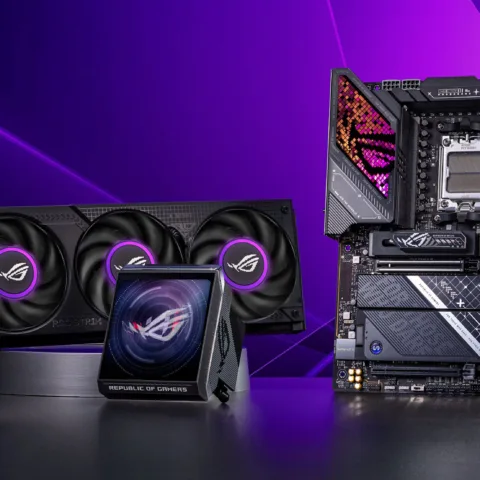At a private discussion on mobile advertising on Wednesday night, XL Axiata responded to the uproar regarding the way it has deployed its mobile ads on smartphones and computers. Many XL subscribers are upset that their browsing experience has been interrupted by unwanted advertising and have gone to blogs and Twitter to voice their opinions.
During the discussion, Herwinto Chandra Sutantyo, XL’s head of mobile advertising digital services (pictured seating nearer to the screen above), also mentioned that the company will be delivering ad-supported data packages beginning in December.
The announcement came as the carrier had been under fire from bloggers, mainstream media, and the general public for delivering advertising on websites by hijacking those sites and placing ad frames above them and for delivering interstitial advertising. XL is not alone in facing this backlash as Telkomsel had also came under the same criticisms and received official complaints from eleven Indonesian media sites.
A matter of perspective
According to Sutantyo, the company is working with a number of media sites and have received positive feedback over its proposal to share revenue from its own advertising program.
Depending on the parties involved there are several different perspectives to this issue ranging from positive to negative.
Companies whose products, services, or sites are being promoted through these ads may have a good impression of the program. Website owners who share a cut of the ads shown on their sites might also be pleased with the additional income it receives.
Website owners who have no arrangement with carriers but have these ads displayed over their sites may well feel invaded, and visitors to websites have the right to feel violated from having to see ads when they have already paid for the service.
There is a publicly understood commercial arrangement that when consumers pay for services or products, they can expect to not be served advertising especially when there had been absolutely no announcement to that effect.
In the case of print media, people understand that they aren’t paying for the full cost of the copy of the newspaper or magazine they have in their hands, and much of which is covered by advertising revenue. This however does not apply to telecommunication services as the telco industry had never been dependent on it.
During the discussion, an even more grave concern was brought up in which a website owner may face litigation from its own advertising partner if advertising material from a competing company is shown through the carrier-provided iframe ad placement. It might seem like a simple case of misattributing responsibility but a legal case is unpredictable, not to mention costly to handle. It’s much wiser avoid situations that could prompt such action.
Promoting local sites and services?
It’s difficult to understand why anyone would want to partner with mobile carriers to serve these intrusive iframe ads on websites, but according to Sutantyo, the company “wants local sites to dominate the top websites that XL customers visit” and that the ad product is well received by the parties approached by XL.
Currently the top ten most popular sites accessed through XL are foreign sites, dominated by the likes of Facebook, Twitter, and YouTube. “If [news website] Detik goes down for example, it wouldn’t even register as a hole in our traffic report because it’s so far down the list”. Detik is among the most popular sites in Indonesia but apparently it fails to break even the top 50 sites on XL Axiata’s network according to Sutantyo.
One of XL’s intentions is apparently to use these mobile ads to help promote local sites, services, and companies, to increase visitors and boost them up the ranks. However, if consumers feel that their mobile experience is rudely interrupted by the ads, it’s not without precedent that the advertiser will receive a negative backlash. Kakao was the first company to see such a widespread public complaint on Twitter when it ran a super aggressive campaign on Telkomsel’s interstitial ads earlier this year prompting the company to withdraw its mobile ads from the carrier.










